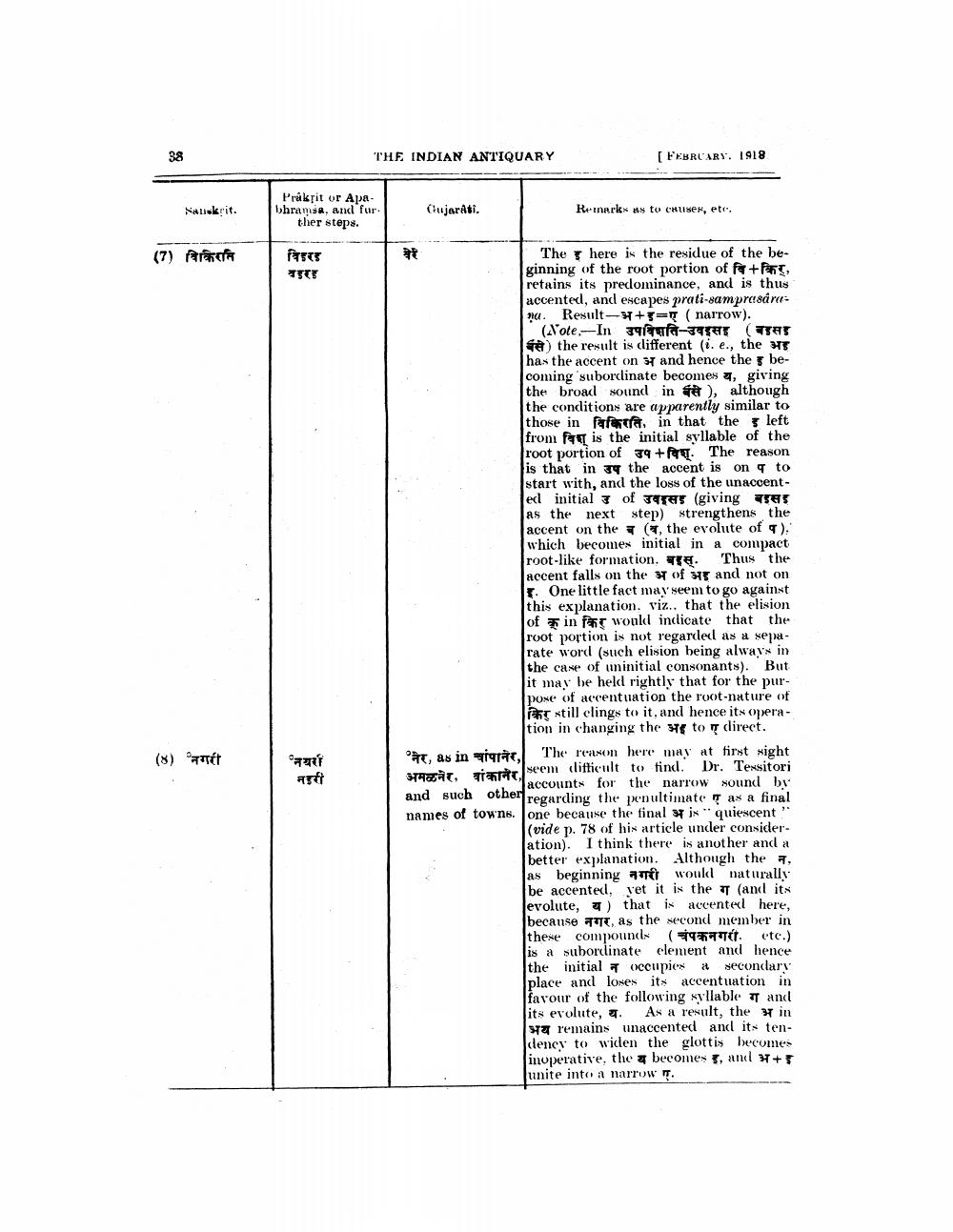________________
THE INDIAN ANTIQUARY
FEBRUARY. 1918
Sanskrit.
Prakrit or Apa bhramsa, and fur.
ther steps.
Cujarati.
Renark as to causer, etc.
(7) AT
विरह
#
The here is the residue of the beginning of the root portion of f erti, retains its predominance, and is thus accented, and escapes prati-samprasara na. Result-97+3=T (narrow).
(Note.--In 39 -305975 (7585 se) the result is different (i. e., the has the accent on and hence the becoming 'suborclinate becomes , giving the broad sound in th), although the conditions are apparently similar to those in feft, in that the left from it is the initial syllable of the root portion of 39 +fy. The reason is that in 39 the accent is on to start with, and the loss of the unaccentled initial उ of उवासह (giving बासह as the next step) strengthens the accent on the 3 (, the evolute of T). which becomes initial in a compact root-like formation. T . Thus the accent falls on the stof 5 and not on 5. One little fact may seem to go against this explanation. viz.. that the elision of in fr would inclicate that the root portion is not regarded as a separate word (such elision being always in the case of uninitial consonants). But it may be held rightly that for the purpose of accentuation the root-nature of Far still clings to it, and hence its opera
tion in changing the s to T direct. Par, as in igår. The reason here may at first night
seem lifticult to find. Dr. Tensitori अमळनेर, वांकानेर,
accounts for the narrow sound by and such other regarding the penultimate T as a final names of towns. Jone because the final inquiescent"
(vide p. 78 of his article under consideration). I think there is another and a better explanation. Although the as beginning a t woukl naturally be accented, yet it is the T and its evolute, ) that is accented here, because TT, as the second member in these compounds (1997r. etc.) is a subordinate element and hence the initial T occupies i secondary place and loves its accentuation in favour of the following syllable T and its evolute, 4. As a result, the in
remains unaccented and its tendeney to widen the glottis becomes inoperative, the becomes 3, an + unite into a narrow .
(8)
Tét
महरी




